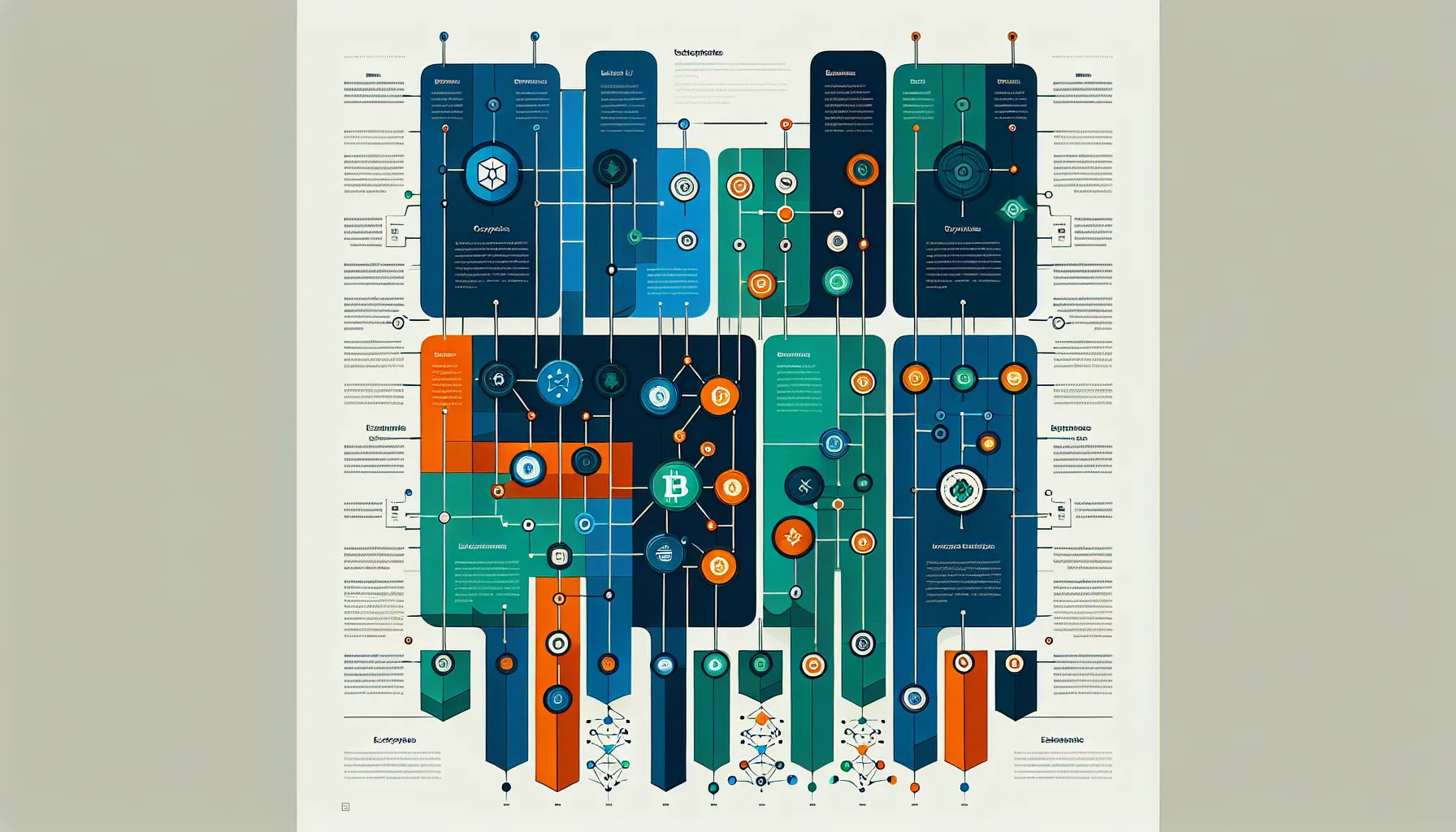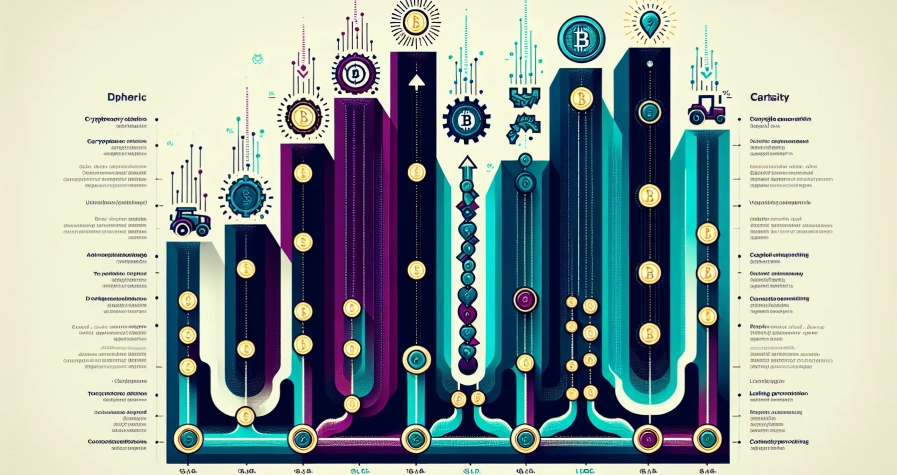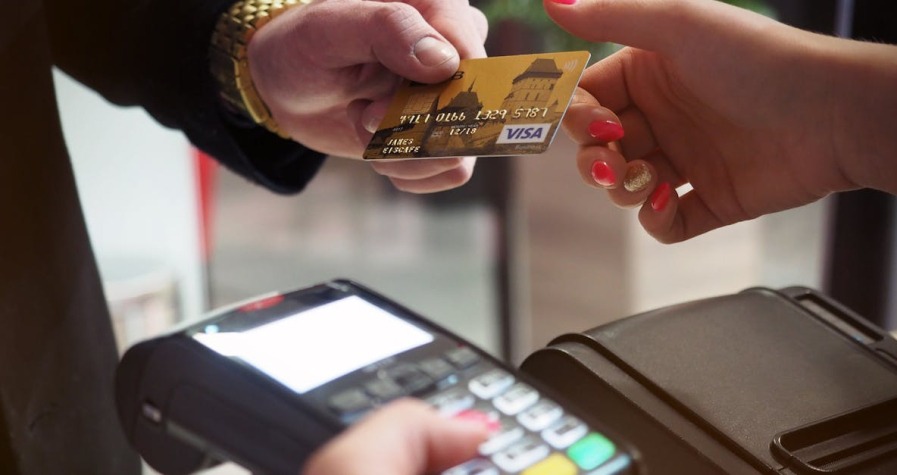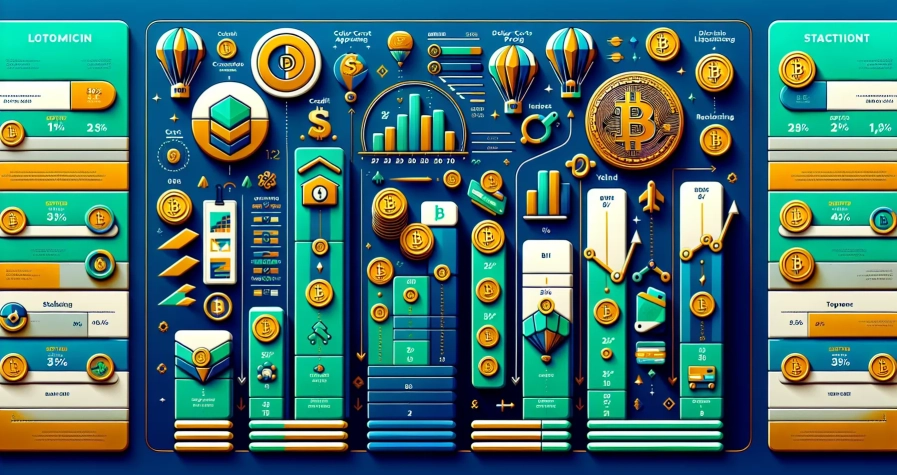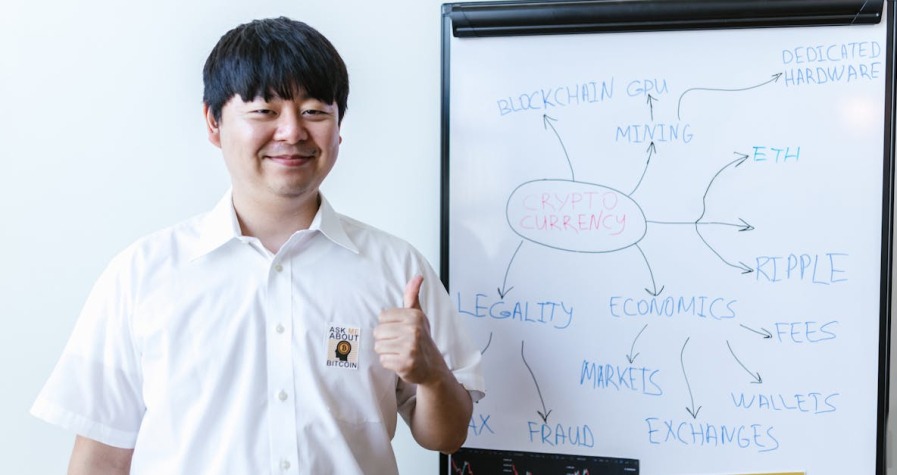The cryptocurrency landscape has evolved far beyond speculative trading and meme coins. Today, a growing number of blockchain projects are tackling genuine real-world problems, from financial inclusion to supply chain transparency. These initiatives demonstrate that digital assets can deliver tangible value beyond mere investment vehicles.
While thousands of crypto projects exist, only a handful have successfully bridged the gap between blockchain innovation and practical, everyday utility. These projects have formed partnerships with major enterprises, deployed working infrastructure, and created solutions that people and businesses actually use, not just in theory, but in practice.
This article explores eight crypto projects that stand out for their real-world applications. Each has proven its utility through measurable adoption, enterprise integration, or infrastructure deployment. Whether it’s connecting blockchain smart contracts to external data, revolutionising logistics, or bringing internet connectivity to underserved areas, these projects showcase blockchain’s potential to reshape industries and improve lives across the globe.
Key Takeaways
- Eight crypto projects with real-world utility are bridging the gap between blockchain innovation and practical, everyday applications across multiple industries.
- Chainlink solves the oracle problem by providing decentralised data feeds that secure over $75 billion in DeFi protocols, enabling smart contracts to interact with real-world events.
- VeChain revolutionises supply chain management through enterprise partnerships with Walmart China and BMW, tracking products from manufacture to consumer using blockchain technology.
- Stellar enables fast cross-border payments settling in 3-5 seconds with fees under a penny, promoting financial inclusion for 1.4 billion unbanked adults worldwide.
- Helium has deployed nearly one million community-operated hotspots across 190+ countries, creating a decentralised wireless network for IoT devices used by companies like Lime and Conserv.
- Crypto projects with real-world utility demonstrate measurable adoption and enterprise integration, positioning them to weather market volatility better than purely speculative tokens.
1. Chainlink: Bridging Blockchains to Real-World Data
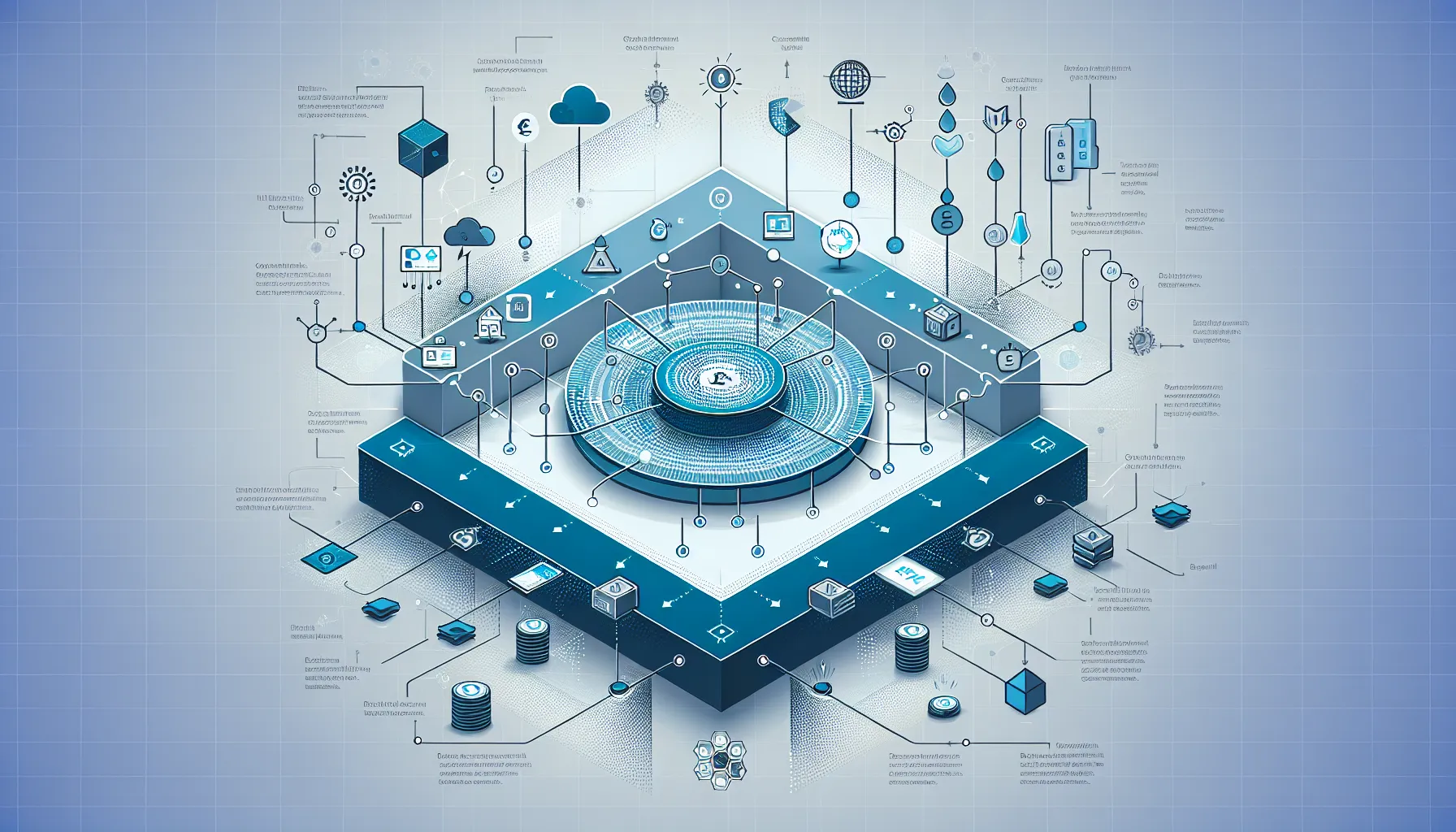
Chainlink addresses one of blockchain’s most fundamental challenges: the oracle problem. Smart contracts, by their nature, cannot directly access information outside their native blockchain. They need reliable, tamper-proof connections to external data sources, and that’s precisely what Chainlink provides through its decentralised oracle network.
The project has become the industry standard for bringing off-chain data onto blockchains, enabling smart contracts to interact with real-world events, APIs, payment systems, and more. This infrastructure is critical for countless blockchain applications that require trustworthy external information.
How Chainlink Powers Smart Contracts
Chainlink’s oracle network operates through a decentralised system of node operators who retrieve, validate, and deliver data to smart contracts. Unlike centralised oracles that create single points of failure, Chainlink uses multiple independent nodes to aggregate data, ensuring accuracy and reliability.
The network supports various data types, including price feeds for cryptocurrencies and traditional assets, weather data, sports results, and IoT sensor readings. Developers can customise oracle configurations based on their specific needs, selecting data sources, number of nodes, and security parameters.
Chainlink’s reputation system incentivises honest behaviour among node operators. Nodes stake LINK tokens as collateral, which can be forfeited if they provide inaccurate data. This economic security model has proven robust, with the network processing billions of dollars in transaction value without significant security incidents.
Real-World Applications in Finance and Insurance
Traditional financial institutions have increasingly adopted Chainlink to bridge legacy systems with blockchain technology. SWIFT, the global financial messaging network, has partnered with Chainlink to explore cross-chain interoperability solutions, potentially connecting thousands of banks to blockchain networks.
In decentralised finance (DeFi), Chainlink price feeds secure over $75 billion in total value locked across numerous protocols. These feeds enable lending platforms, synthetic assets, stablecoins, and derivatives to function with reliable market data, essential for preventing manipulation and ensuring fair pricing.
Insurance applications represent another significant use case. Parametric insurance products use Chainlink to automatically trigger payouts based on verifiable real-world events. For example, crop insurance can pay farmers automatically when weather data confirms drought conditions, eliminating lengthy claims processes and reducing administrative costs. Etherisc and Arbol have deployed such solutions, demonstrating blockchain insurance’s practical benefits.
2. VeChain: Revolutionising Supply Chain Management
VeChain has positioned itself as the leading blockchain solution for enterprise supply chain management. The project tackles counterfeit goods, inefficient logistics, and lack of transparency, problems that cost global industries billions annually. By recording product information on an immutable blockchain, VeChain enables unprecedented traceability and verification.
The platform uses a dual-token system: VET for value transfer and VTHO for transaction fees. This design separates investment speculation from operational costs, making blockchain adoption more predictable and manageable for businesses.
Tracking Products From Manufacture to Consumer
VeChain assigns unique identities to physical products through NFC chips, QR codes, or RFID tags. These identifiers link physical items to their digital twins on the blockchain, creating an unalterable record of their journey through the supply chain.
Consumers can scan products to verify authenticity and view complete provenance information, where materials were sourced, when and where manufacturing occurred, how the product was transported, and storage conditions throughout its journey. This transparency builds trust and combats counterfeiting, particularly valuable for luxury goods, pharmaceuticals, and food products.
For businesses, VeChain provides end-to-end visibility that improves inventory management, reduces fraud, and enables rapid response to quality issues. If contamination or defects are detected, companies can instantly identify affected batches and their precise locations, enabling targeted recalls instead of costly blanket withdrawals.
Notable Enterprise Partnerships
VeChain’s enterprise adoption sets it apart from many blockchain projects. Walmart China uses VeChain to track food products, providing consumers with detailed information about produce origins and safety testing. The initiative covers dozens of product lines across hundreds of stores, representing one of blockchain’s largest retail deployments.
BMW has partnered with VeChain to create digital passports for vehicles, recording mileage, service history, and ownership changes. This immutable record helps prevent odometer fraud and provides buyers with verified vehicle histories, potentially transforming used car markets.
The project has also partnered with DNV, a global quality assurance and risk management company, to bring blockchain certification to industries ranging from fashion to energy. H&M Group has explored VeChain for sustainable fashion initiatives, whilst various wine producers use the platform to combat counterfeiting in the luxury beverage market.
3. Stellar: Enabling Fast Cross-Border Payments
Stellar was created to make money move as seamlessly as information moves across the internet. The network facilitates fast, low-cost international transfers, addressing inefficiencies in traditional remittance and cross-border payment systems that often take days and charge substantial fees.
Unlike many blockchain projects focused on speculation, Stellar explicitly targets financial inclusion. The network connects banks, payment systems, and individuals, enabling them to transact across currencies and borders with minimal friction. Transactions settle in 3-5 seconds with fees typically under a penny, making micropayments economically viable.
Stellar’s built-in decentralised exchange allows seamless currency conversion during transfers. Users can send funds in one currency, and recipients automatically receive their local currency, with the network finding optimal exchange paths through its liquidity pools.
Financial Inclusion for the Unbanked
Roughly 1.4 billion adults worldwide lack access to basic financial services. Traditional banking infrastructure is often absent or prohibitively expensive in developing regions, leaving populations dependent on cash and excluded from the digital economy.
Stellar addresses this by enabling mobile-based financial services that don’t require traditional bank accounts. Organisations can build affordable wallets and payment applications on Stellar’s infrastructure, providing savings, transfers, and payment capabilities via smartphones.
The Stellar Development Foundation has partnered with organisations targeting underserved markets. In Nigeria and other African nations, Stellar powers remittance services that significantly undercut traditional money transfer operators. Workers abroad can send money home more affordably, with recipients accessing funds within minutes rather than days.
Circle, the company behind USDC stablecoin, has expanded its presence on Stellar, recognising the network’s strengths for payments and remittances. MoneyGram has also partnered with Stellar for cross-border transfers, connecting its extensive retail network with blockchain settlement. These partnerships demonstrate growing recognition that Stellar’s infrastructure offers practical advantages over traditional payment rails and even other blockchain networks.
4. Filecoin: Decentralised Data Storage Solutions
Filecoin reimagines data storage by creating a decentralised marketplace where anyone with spare storage capacity can rent it to those who need it. This peer-to-peer approach challenges the centralised cloud storage model dominated by companies like Amazon, Google, and Microsoft.
The network incentivises storage providers with Filecoin tokens (FIL) in exchange for reliably storing and serving data. Cryptographic proofs ensure providers actually store the data they claim to hold, whilst built-in redundancy protects against data loss if individual storage providers go offline.
Filecoin complements the InterPlanetary File System (IPFS), a distributed file-sharing protocol, by adding economic incentives and guaranteed persistence. Whilst IPFS allows decentralised file sharing, Filecoin ensures data remains available long-term through its incentive mechanism.
How Filecoin Challenges Traditional Cloud Storage
Centralised cloud storage creates several vulnerabilities: single points of failure, censorship risks, and concentration of control. When services like AWS experience outages, large portions of the internet go dark. Governments can compel providers to remove or surrender data. Users depend entirely on companies’ continued operation and goodwill.
Filecoin distributes data across numerous independent storage providers globally. This decentralisation improves resilience, no single outage can eliminate access. Censorship becomes significantly more difficult when data exists across thousands of nodes in different jurisdictions. And users retain greater control over their information.
The network also promises cost advantages. Traditional cloud providers maintain significant infrastructure overhead and profit margins. Filecoin’s marketplace model allows underutilised storage capacity to enter the market, potentially driving prices down through competition. Storage providers can be individuals with spare hard drive space, small datacentres, or large operations, anyone can participate.
Organisations concerned about data sovereignty, censorship resistance, or vendor lock-in find Filecoin particularly appealing. NFT platforms use Filecoin to ensure digital art and collectibles remain permanently accessible. Archival projects and libraries exploring Filecoin for long-term preservation have also emerged, recognising that decentralised storage may outlive any single company or institution.
5. Helium: Building a Decentralised Wireless Network
Helium has created something genuinely novel: a blockchain-powered wireless network built and operated by individuals rather than telecommunications companies. The project provides low-power, long-range connectivity for Internet of Things (IoT) devices through a decentralised infrastructure of community-operated hotspots.
Hotspot operators deploy hardware in their homes or businesses, providing wireless coverage and earning HNT tokens based on the coverage they offer and the data transferred across their devices. This incentive structure has driven rapid network expansion without the massive capital expenditure traditional telecom infrastructure requires.
The network uses the LoRaWAN protocol, designed for IoT devices that need to transmit small amounts of data over long distances whilst consuming minimal power. This makes Helium ideal for applications like asset tracking, environmental monitoring, and smart city infrastructure, but unsuitable for bandwidth-intensive uses like video streaming or web browsing.
IoT Connectivity Powered by Community Hotspots
Helium’s approach solves a fundamental IoT challenge: connectivity. Cellular networks work well for smartphones but are often too power-hungry and expensive for simple sensors and trackers. Wi-Fi has limited range. Building dedicated IoT infrastructure requires significant investment. Helium provides an alternative that’s low-cost, energy-efficient, and already deployed.
Devices can connect to the nearest Helium hotspot, transmitting data at costs far below traditional cellular IoT solutions. For businesses deploying hundreds or thousands of sensors, whether for agricultural monitoring, logistics tracking, or facilities management, this cost difference becomes substantial.
The economic model creates a virtuous cycle: as more hotspots deploy, coverage improves, attracting more IoT use cases. Greater usage generates more rewards for hotspot operators, incentivising further expansion. This grassroots network growth has proven remarkably effective.
Real-World Deployment and Coverage
Helium’s network now comprises nearly one million hotspots across more than 190 countries, making it one of the world’s largest IoT networks. Coverage density in urban areas often exceeds that of purpose-built LoRaWAN networks, whilst rural deployment continues expanding.
Companies are building practical applications on this infrastructure. Lime uses Helium to track its electric scooters and bikes, reducing connectivity costs whilst maintaining real-time location data. Conserv creates environmental sensors for museums and archives, monitoring conditions that could damage priceless artefacts, with Helium providing reliable, low-cost connectivity.
Digital Matter produces asset trackers that use Helium for logistics and supply chain applications, whilst Invoxia offers pet trackers leveraging the network. These real-world implementations demonstrate that Helium has moved beyond proof-of-concept into genuine utility, providing infrastructure that businesses and consumers actively use.
6. Basic Attention Token: Transforming Digital Advertising
Basic Attention Token (BAT) attempts to fix the broken digital advertising ecosystem through a blockchain-based model that respects user privacy whilst fairly compensating content creators. The token operates within the Brave browser, which blocks traditional ads and trackers by default.
The current advertising model involves invasive tracking, security vulnerabilities from ad networks, slow page loads, and substantial value extraction by intermediaries. Users receive nothing even though being the product. Publishers struggle with declining revenues. Advertisers face fraud and poor targeting transparency.
BAT reimagines this system. Users who opt in view privacy-respecting ads and earn BAT tokens for their attention. They can then support favourite creators directly with these earnings, or keep the tokens. Advertisers get better engagement and transparent reporting without invasive tracking. Creators receive more revenue than traditional ad models provide.
Rewarding Users for Attention and Privacy
Brave’s approach fundamentally shifts the value exchange in digital advertising. Instead of surveillance-based targeting, the browser uses local, on-device matching of ads to user interests. Browsing data never leaves the user’s device, preserving privacy whilst still enabling relevant advertising.
Users who enable Brave Rewards receive BAT tokens based on their attention to ads. The browser tracks views and engagement locally, reporting aggregate data to advertisers without revealing individual behaviour. This privacy-first approach complies with GDPR and similar regulations whilst providing better user experience than traditional ad tech.
Creators, whether websites, YouTubers, or Twitch streamers, can register to receive BAT tips from users. Brave also distributes a portion of ad revenue to websites users visit, even if those sites display no ads. This creates a sustainable model for content funding that doesn’t rely on intrusive tracking or centralized platforms taking large cuts.
Brave has achieved significant adoption, with over 65 million monthly active users. Major brands including Verizon, Intel, and Chipotle have run campaigns through the platform. Tens of thousands of verified creators receive BAT, demonstrating that the model works at scale. Whilst BAT hasn’t yet upended the digital advertising industry, it represents one of crypto’s most practical and user-facing applications.
7. Polygon: Scaling Ethereum for Mainstream Adoption
Ethereum hosts the vast majority of DeFi applications, NFT marketplaces, and decentralised applications, but its success created significant scaling challenges. High transaction fees and network congestion made many use cases economically unviable. Polygon emerged as a leading solution to these limitations.
Polygon operates as a layer-2 scaling solution and sidechain platform for Ethereum. It processes transactions off the main Ethereum chain, bundling them for settlement on Ethereum’s base layer. This approach dramatically increases throughput whilst reducing fees, often to mere pennies, whilst maintaining security through Ethereum’s established network.
The platform offers multiple scaling solutions, including Polygon PoS (proof-of-stake), Polygon zkEVM (zero-knowledge Ethereum Virtual Machine), and other technologies. This flexibility allows developers to choose the optimal solution for their specific requirements, balancing factors like security, decentralisation, and performance.
Real-World Use Cases in Gaming and DeFi
Polygon’s low fees and high throughput have made it particularly attractive for applications that require frequent transactions. Gaming represents a prime example, players might perform hundreds of actions in a session, each generating a transaction. On Ethereum’s base layer, fees would quickly become prohibitive. Polygon makes blockchain gaming economically feasible.
Decentraland, The Sandbox, and numerous other metaverse and gaming projects have integrated Polygon. Players can trade items, earn rewards, and interact with game economies without worrying that transaction fees exceed the value being transferred. This removes a major adoption barrier for blockchain gaming.
DeFi protocols have also embraced Polygon. Aave, Uniswap, SushiSwap, and Curve all operate on the network, offering users the same functionality as their Ethereum deployments but with dramatically lower costs. This accessibility has brought DeFi to users who were priced out of Ethereum’s high-fee environment.
Major brands have chosen Polygon for Web3 initiatives. Starbucks built its Odyssey loyalty programme on Polygon. Reddit launched community points and NFT avatars on the platform, exposing millions of users to blockchain technology with a seamless experience. Nike’s .SWOOSH digital platform also uses Polygon, as does Instagram for NFT features. These mainstream integrations demonstrate Polygon’s readiness for large-scale consumer applications.
8. Cardano: Sustainable Blockchain for Developing Nations
Cardano distinguishes itself through a research-driven, peer-reviewed approach to blockchain development. The project emphasises sustainability, both environmental and economic, making it particularly relevant for developing regions where resources are constrained and long-term viability is critical.
The platform uses a proof-of-stake consensus mechanism that consumes a fraction of the energy required by proof-of-work systems like Bitcoin. This efficiency makes Cardano viable in regions with limited or expensive electricity, whilst aligning with global sustainability goals.
Cardano’s development philosophy prioritises formal verification and academic rigour. Changes undergo extensive research and peer review before implementation, creating a slower but potentially more secure and reliable platform. This conservative approach appeals to governments and institutions considering blockchain adoption.
Educational Credentials and Identity Solutions
One of Cardano’s most significant real-world implementations occurred in Ethiopia, where the government partnered with the platform to create a blockchain-based credential system for students. The initiative aims to provide five million students with digital identities and verifiable educational records stored on Cardano’s blockchain.
This application addresses real problems in developing nations: credential fraud, lost records, and difficulty verifying qualifications. When students move between schools or apply for jobs, their records follow them, permanently accessible and verifiable. Institutions can instantly confirm credentials without contacting previous schools or risking acceptance of fraudulent documents.
Digital identity represents another focus area. Many people in developing nations lack official identification, excluding them from essential services, formal employment, and financial systems. Blockchain-based identity solutions can provide verifiable digital credentials without requiring expensive centralised infrastructure.
Cardano’s World Mobile partnership aims to bring connectivity to underserved regions, particularly in Africa, using a blockchain-based model similar to Helium but focused on broader telecommunications. The project has deployed nodes in Tanzania and Zanzibar, providing internet access whilst creating economic opportunities for local operators.
These initiatives demonstrate Cardano’s commitment to solving real-world problems in developing economies. Whilst some crypto projects focus primarily on DeFi or speculative use cases in developed markets, Cardano targets fundamental infrastructure challenges in regions where blockchain’s benefits could be most transformative.
Conclusion
These eight crypto projects prove that blockchain technology extends far beyond digital gold or speculative trading. They’re solving tangible problems, connecting smart contracts to real-world data, making supply chains transparent, enabling affordable international payments, providing decentralised storage and connectivity, reforming digital advertising, scaling Ethereum, and bringing essential services to developing nations.
What distinguishes these projects is demonstrated utility rather than theoretical potential. They’ve secured enterprise partnerships, deployed working infrastructure, and attracted genuine users who rely on their services. VeChain tracks products for Walmart. Stellar powers MoneyGram transfers. Brave delivers ads to millions whilst respecting privacy. These aren’t vaporware or whitepapers, they’re functional systems creating measurable value.
The crypto industry still faces challenges: regulatory uncertainty, user experience barriers, and competition from traditional alternatives. But projects with real-world utility are best positioned to weather market volatility and regulatory scrutiny. When blockchain provides genuine benefits, lower costs, greater efficiency, improved transparency, or entirely new capabilities, adoption follows naturally.
As blockchain technology matures, the distinction between projects with utility and those without will become increasingly important. Speculation may drive short-term price movements, but long-term relevance depends on solving actual problems for real users. The eight projects highlighted here have already begun that journey, demonstrating that cryptocurrency’s most significant contributions may eventually have little to do with finance and everything to do with reimagining how systems and services function in an increasingly digital world.
Frequently Asked Questions
What are crypto projects with real-world utility?
Crypto projects with real-world utility are blockchain initiatives that solve genuine problems beyond speculation. They include solutions for supply chain transparency, cross-border payments, decentralised storage, data connectivity, and financial inclusion, with measurable adoption and enterprise partnerships demonstrating practical value.
How does Chainlink solve the oracle problem for smart contracts?
Chainlink uses a decentralised network of node operators to retrieve, validate, and deliver external data to smart contracts. Multiple independent nodes aggregate information to ensure accuracy, whilst a reputation system incentivises honesty, enabling blockchain applications to interact reliably with real-world events and data sources.
Which cryptocurrency is best for cross-border payments?
Stellar is specifically designed for fast, low-cost international transfers, settling transactions in 3–5 seconds with fees typically under a penny. The network connects banks and payment systems, features built-in currency conversion, and partners with major services like MoneyGram for practical remittance solutions.
Why is VeChain important for supply chain management?
VeChain creates immutable blockchain records of products throughout the supply chain using NFC chips or QR codes. This enables consumers to verify authenticity and view complete provenance, whilst helping businesses combat counterfeiting, improve inventory management, and conduct targeted recalls when quality issues arise.
What is the difference between layer-1 and layer-2 blockchain solutions?
Layer-1 blockchains are base networks like Ethereum or Bitcoin. Layer-2 solutions like Polygon process transactions off the main chain and bundle them for settlement on layer-1, dramatically increasing transaction speed and reducing fees whilst maintaining the security of the underlying blockchain network.
How does Filecoin differ from traditional cloud storage providers?
Filecoin creates a decentralised marketplace where anyone can rent spare storage capacity, distributing data across numerous independent providers globally. This improves resilience, reduces censorship risks, eliminates single points of failure, and potentially lowers costs compared to centralised providers like Amazon or Google.

